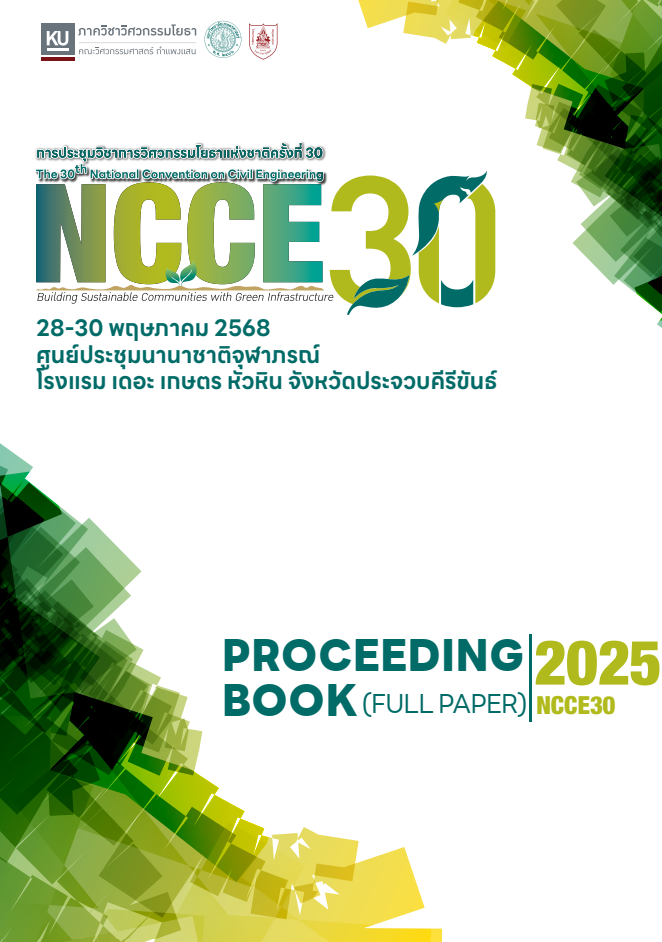Influence of Transverse Reinforcement Configuration and Axial Load Ratios on the Blast Resistance of RC Columns
คำสำคัญ:
Axial Load Ratio, Blast Resistance, Reinforced Concrete Columns, Transverse Reinforcement Configuration, Blast Loadingบทคัดย่อ
Reinforced concrete (RC) columns are critical structural components in buildings and infrastructure, particularly for resisting axial and lateral loads. Under extreme loading conditions, such as blasts, their performance directly impacts structural safety and resilience. This study investigates the influence of transverse reinforcement configurations and axial load ratios on the blast resistance of RC columns through numerical simulations conducted using the LS-DYNA finite element software. Various transverse reinforcement configurations, including double square (2S), square-diamond (SD), and square-X (SX), alongside tie spacing and axial load ratios, are analyzed to evaluate their deformation and failure behavior. The Load Blast Enhance (LBE) method is used to simulate blast impacts, following UFC 3-340-02 standards. Results indicate that advanced transverse reinforcement configurations, particularly the 2S design, significantly enhance structural performance by improving stress distribution and limiting lateral deformation. Reduced tie spacing further increases stiffness and energy dissipation. Axial load ratios play a critical role; moderate levels enhance stability and energy absorption, while higher ratios reduce ductility and increase vulnerability to brittle failure. These findings provide valuable insights into optimizing reinforcement detailing and axial load considerations for the design of blast-resistant RC columns, contributing to safer and more resilient structures in high-risk environments.
ดาวน์โหลด
เผยแพร่แล้ว
วิธีการอ้างอิง
ฉบับ
บท
การอนุญาต
ลิขสิทธิ์ (c) 2025 Engineering Institute of Thailand

This work is licensed under a Creative Commons Attribution-NonCommercial-NoDerivatives 4.0 International License.
บทความที่ได้รับคัดเลือกนำเสนอในการประชุม NCCE ถือเป็นลิขสิทธิ์ของวิศวกรรมสถานแห่งประเทศไทย ในพระบรมราชูปถัมภ์ (วสท.) (Engineering Institute of Thailand)


